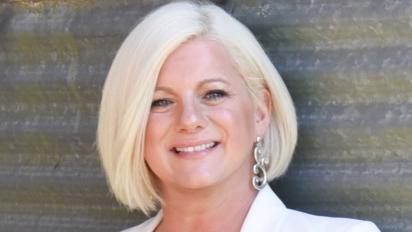The award-winning journalist and author David Lipsky has written a readable, compelling book about climate science and its deniers, The Parrot and the Igloo. The quirky title was a mystery to me until the penultimate chapter, when it finally made sense. His foray into the climate wars is lively and accessible, but built atop meticulous research. It is a good first book for people who want to learn about the climate wars and its key combatants on both sides, with references to highly credible sources for further reading.
 But I would also recommend it even for topic experts, as Lipsky has unearthed many obscure facts that help better understand the people involved. In my case, I have helped sell supercomputers to climate modelers, am a member of the American Geophysical Union and have attended its meetings, studied climate science for two decades, and know personally quite a few of the climate scientists included in his book. Yet I still learned new information about the history.
But I would also recommend it even for topic experts, as Lipsky has unearthed many obscure facts that help better understand the people involved. In my case, I have helped sell supercomputers to climate modelers, am a member of the American Geophysical Union and have attended its meetings, studied climate science for two decades, and know personally quite a few of the climate scientists included in his book. Yet I still learned new information about the history.
Likewise, I have studied organized climate denial for 15 years. I am quite familiar with most of the deniers covered in the book and have researched and written often about them, in a few cases resulting in personal attacks. Still, in reading the book, I often encountered fascinating new-to-me details about these characters. Extensive endnotes, not printed in the book but available online, add even more value to Lipsky’s investigation.
The book’s 50 chapters have amusing titles that make sense upon reading the chapters. They are organized into three parts and an epilogue, where the book’s title finally gets explained.
The first part of the book, “Inventors” (49 pages), tells brief stories of the key figures in the creation of electrical power grids: Samuel Morse (electricity on wires), Thomas Edison (wires under streets for lights), Nikola Tesla (alternating current), and George Westinghouse (commercial alternating current for electric power distribution). I was initially surprised by Lipsky’s way of beginning his book, but it makes sense in context, since most of the world’s grids are powered by fossil fuels, something that must change in order to mitigate the effects of climate change.
The second part of the book, “Scientists” (141 pages), offers a brief history of climate science’s development during the 19th and 20th centuries, for which The Discovery of Global Warming (revised edition 2008), by Spencer R. Weart (a recipient of NCSE’s Friend of the Planet award) is a classic reference with more details. Lipsky covers the struggles of late-20th-century scientists to communicate clear warnings about climate change in the face of indifference, political pushback, and early denial tactics.
The third and longest part of the book, “Deniers” (209 pages), goes into depth on organized climate denial, starting with the precedent tactics used by the tobacco industry, and later direct efforts with key climate change deniers such as Frederick Seitz, Fred Singer, and Steve Milloy. Science threatened profits for both Big Tobacco and the fossil fuel industry, so they funded individuals, front groups, and think tanks to create doubts and attack scientists. The deniers run the gamut from scientists (only rarely climate scientists) to those with no credible science background.
I had known Singer had connections to Sun Myung Moon’s controversial Unification Church, but I was surprised to learn how pervasive they were or that Seitz was equally involved. Lipsky writes:
But Frederick Seitz served on the advisory board of eight Moon conventions. He’s right there in the program: as chairman, vice-chairman. And S. Fred Singer — who would sacrifice a lot for a good pre-paid air ticket — hit up ten church conferences. As vice chairman, as speaker. It remains among the enduring Reverend Moon achievements. Matchmaking: bringing the two men together. The first time the two denial grandfathers appeared side-by-side in a magazine story. Nature reported the Freds as “luminaries of the organizing committee at the 1983 event. That’s the start for these two names that would enter history together.” (p. 268)
In the epilogue (70 pages), Lipsky concludes by describing the 21st-century travails of climate scientists, such as the 2009 theft and cherry-picked release of selected emails from the Climatic Research Unit at the University of East Anglia — also known as Climategate — and Steve McIntyre’s dogged and unfounded criticism of Michael E. Mann and the hockey stick study, as well as harassment of many scientists with Freedom of Information Act requests designed mostly to waste people’s time.
Lipsky explains, “The story this book tells is about the people who made our world; then the people who realized there might be a problem; then the people who lied about that problem” (p. xiii). He tells the story in a compelling, informative, and illuminating way. I liked this book very much.







